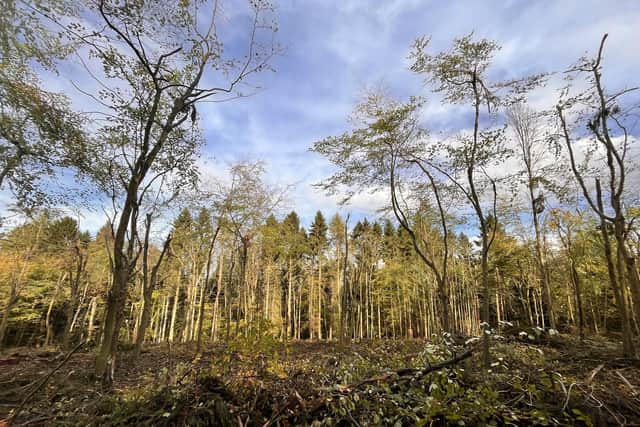Nation Trust to restore Ashridge Estate's ancient woodland over next three years
and live on Freeview channel 276
Berkhamsted’s Ashridge Estate is being restored by the National Trust as part of a three-year project to protect the ancient woodland.
The new initiative by the National Trust aims to restore 42 hectares (104 acres) of the woodland, equivalent to 103 football pitches, over the next three years. The estate, which was used as a location for films like Harry Potter and the Goblet of Fire and Les Misérables, is well-known for its diverse landscape and wildlife.
Advertisement
Advertisement
The ancient woodlands are home to endangered species like the common dog violet and lesser celandines that are crucial for biodiversity in the UK.


Tom Hill, Trees and Woodland Adviser for the National Trust said: “Restoring plantation woods back to native broadleaf habitats is essential work that the National Trust is undertaking to prevent the decline in the UK’s wildlife.”
The project will involve removing non-native conifers and replanting native broadleaf species. Early next year, parts of the project area will be replanted with a mixture of native broadleaf species like oak, hornbeam, beech and wild cherry while other parts will be left to naturally regenerate.
A specialist track matting will be used, funded by the Forestry Commission Innovation Fund, to help protect the ground around the woodland rides. Countryside Manager at Ashridge Estate Emily Smith explained: “Many of the woodlands are deep in the landscape where there are no surfaced paths or trackways. The heavy clay soil is vulnerable to compaction and erosion, meaning that until now it has not been possible to carry out the large-scale forestry work needed without causing long-term damage to the ancient woodland floor.
Advertisement
Advertisement
"It’s been a challenge for many years, so we are really excited to be trialling this new method.”
Tom added: “If successful, the track matting project at Ashridge could set a new bar in terms of what fully sustainable forestry could look like in the UK – it’s a really exciting prospect.”
Lessons learnt from the project will be shared with other conservation organisations like the Woodland Trust to help inform future restoration.
